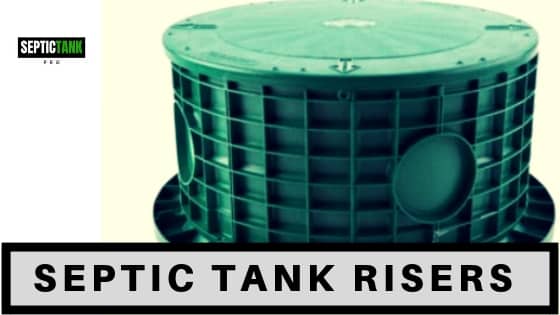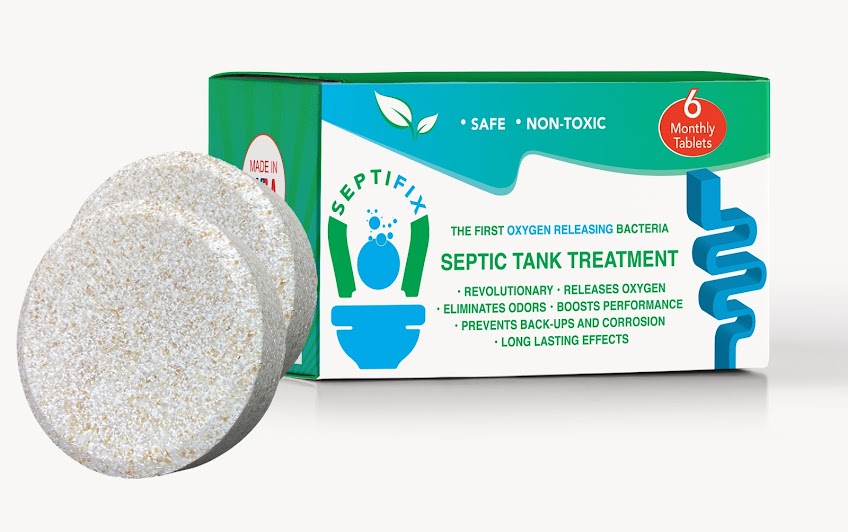What Is A Septic Aerator in Aerobic Systems?
In this article, we will discuss Septic Aerators, what they are, what they do, and why some septic systems need them.
To better understand aerators you must first understand how septic tanks use microorganisms to process waste, and the difference between aerobic and anaerobic microoranisms. Septic tanks require microorganisms in order to process both liquid and solid household (or facility) waste. These microorganisms are supposed to reduce the number of harmful pathogens in the effluent (the processed waste) before it gets released into the environment. There are two types of microorganisms that can do this job: either anaerobic or aerobic.
Anaerobic microorganisms thrive in an unoxygenated environment typical in traditional septic systems. On the other hand, aerobic microorganisms need oxygen to effectively process your household waste. This is where aeration comes in.
So what is a septic aerator? The septic aerator transforms your traditional septic system into a small scale wastewater “treatment facility”. The septic aerator pump breathes air into a holding chamber in your septic tank. This introduction of air allows for the growth of air-thriving (aerobic) bacteria. This bacteria, in turn, break down the wastewater, diminishing the harmful pathogens, producing effluent that is harmless to the environment.
A Closer Look at Aerobic Treatment Systems and the Role Aerators Play in them.
In accordance to the Environmental Protection Agency’s (EPA) definitions, aerobic septic tank systems utilize aerobic microorganisms and their superior digesting capabilities to treat waste more efficiently than traditional septic systems can. This renders the treated effluent to be safe for dispersal to the ground’s surface.
Without a septic aerator, your septic system is virtually ineffective and could do substantial damage to your local environment, subjecting you to applicable legal fines and penalties. Aerobic treatment for septic tank systems is an advanced process to treat wastewater.
An aerator system for septic tanks is typically manufactured with a multiple-chambered tank with a number of stages. These stages consist of a tank which collects solid waste (referred to as the “trash tank”), an aeration chamber, and a settling tank.
Most aerator systems usually have a fourth stage needed for disinfection (either chlorine or ultraviolet). This stage can also double as a pump chamber. An aerobic treatment system is able to process waste and discharge better than 98% odorless, clear water. In general, aerobic treatment systems will surface effluent either to a ditch or pond, a spray irrigation system, or a drip irrigation system.
How Does a Septic Aerator Work?
Aerobic septic tank systems utilize an air compressor or blower system to pump air into the main treatment tank. Here, the air mixes with the tank’s solid wastes and wastewater. This process is called septic tank aeration, and the oxygen in the air sustains the aerobic microorganisms which catalyze digestion of the waste.
The National Park Service notes that the use of aerobic septic tank systems can aid in processing waste with speeds up to 20 times faster than traditional septic tank systems. Unprocessed solid wastes will either settle to the bottom of the septic tank as sludge or will flow through a settling chamber. From here, the solid wastes eventually return to the main chamber of the septic tank. Some septic tank systems are built with a pre-treatment chamber where solid wastes such as toilet paper and grease are separated to avoid clogging the unit.
When to Use Aeration?
The National Small Flows Clearinghouse recommends the installation of an aerobic septic system if there is no adequate space in your property for a drainfield provision or if your soil is unsuitable for septic drainage. Through the process of aeration, aerobic septic systems yield a better quality effluent.
Especially consider an aerobic septic system if your property lies near a body of water that is open for public use or serves as a source of drinking water for public consumption. This also allows you to capture and reuse the discharge from an aerobic system for irrigation or to flush toilets.
The Drawbacks of Aeration
An aerobic septic system utilizes the aeration process to digest household or facility waste at a much faster rate than traditional septic tanks. This entails electrical consumption to run the aerating compressor and pump. This, of course, results to higher electricity costs as compared to traditional septic systems.
Aerobic septic systems are built with more mechanical parts which will periodically require maintenance and repair. Add to that, the level of use and/or waste volume in your household (or property) is a factor in the frequency of septic system maintenance required.
Take note that if the pump is too strong, the septic system aerator could possibly distress the waste contents of the tank, which could flush solids out to the drainfield and result to problems in the system.
Finally, the electric pumps in aerobic septic systems are prone to clogging with lint that comes from washing machines, thus regular (and frequent) system checks are required as prevention.
Related Questions
Why is the Septic Air Pump So Important to your Aerobic Septic System?
The septic air pump is literally the lifeline of any aerobic septic system. The system will not function the way it was designed to without a conditioned, sturdy pump. The purpose of the septic air pump is actually two-fold: first, the air pump forces oxygen into the water allowing for the formation and thriving of aerobic bacteria. As earlier discussed, these aerobic bacteria “eat up” or digest the waste contents in the tank. Aerobic bacteria are much more potent and more efficient at processing waste as compared to the anaerobic bacteria found in conventional septic systems.
Second, the septic air pump facilitates breaking down large solids in the tank into smaller particles, making it easier for the bacteria to cling on to and eventually consume the waste. If the air pump in your aerobic septic system quits, you can expect your aerobic system to revert back to anaerobic within a two-week period. When this happens, your biggest challenge could be that there is no secondary treatment system to back up your aerobic system, if what you originally have is a conventional anaerobic septic system. Once the aerobic system turns back to being anaerobic, instead of producing a clear odorless discharge, the quality of effluent produced will be closely similar to raw sewage. Obviously, raw sewage discharging into a ditch, lake or pond, or being sprayed onto your property’s lawn is not something anybody wants. This is why it is always important to ensure that your system for the air pump is kept in good running condition at all times.
Sure, septic tank systems are not great conversation-starters at dinner parties and cocktail hours, but they definitely play a vital part in any and every facility, whether a business establishment or in your home. Every single time you turn on the tap, flush the toilet or do your laundry, your septic tank system comes into the picture. Water (and the waste they carry) has to travel out of your residential or commercial facility, and into the ever-reliable and ever-necessary septic tank. Everything is simply more sanitary when you have a septic system that does the work as it is exactly supposed to. Check out the latest prices and reviews on Amazon for Septic Air Pumps.
Visit our State Directory For Local Septic Service Providers
References For This Septic Tank Aerator Article
https://www.hunker.com/13417549/how-do-septic-tank-aeration-systems-work
https://tgwastewater.com/products-page/aerators/complete-aerators
https://www.livestrong.com/article/248577-what-is-septic-tank-aeration/
https://laundry-alternative.com/blogs/about/septic-tank-aerator-information
https://blog.coerco.com.au/blog/septic-tanks-why-theyre-important-and-how-to-choose-the-right-kind











